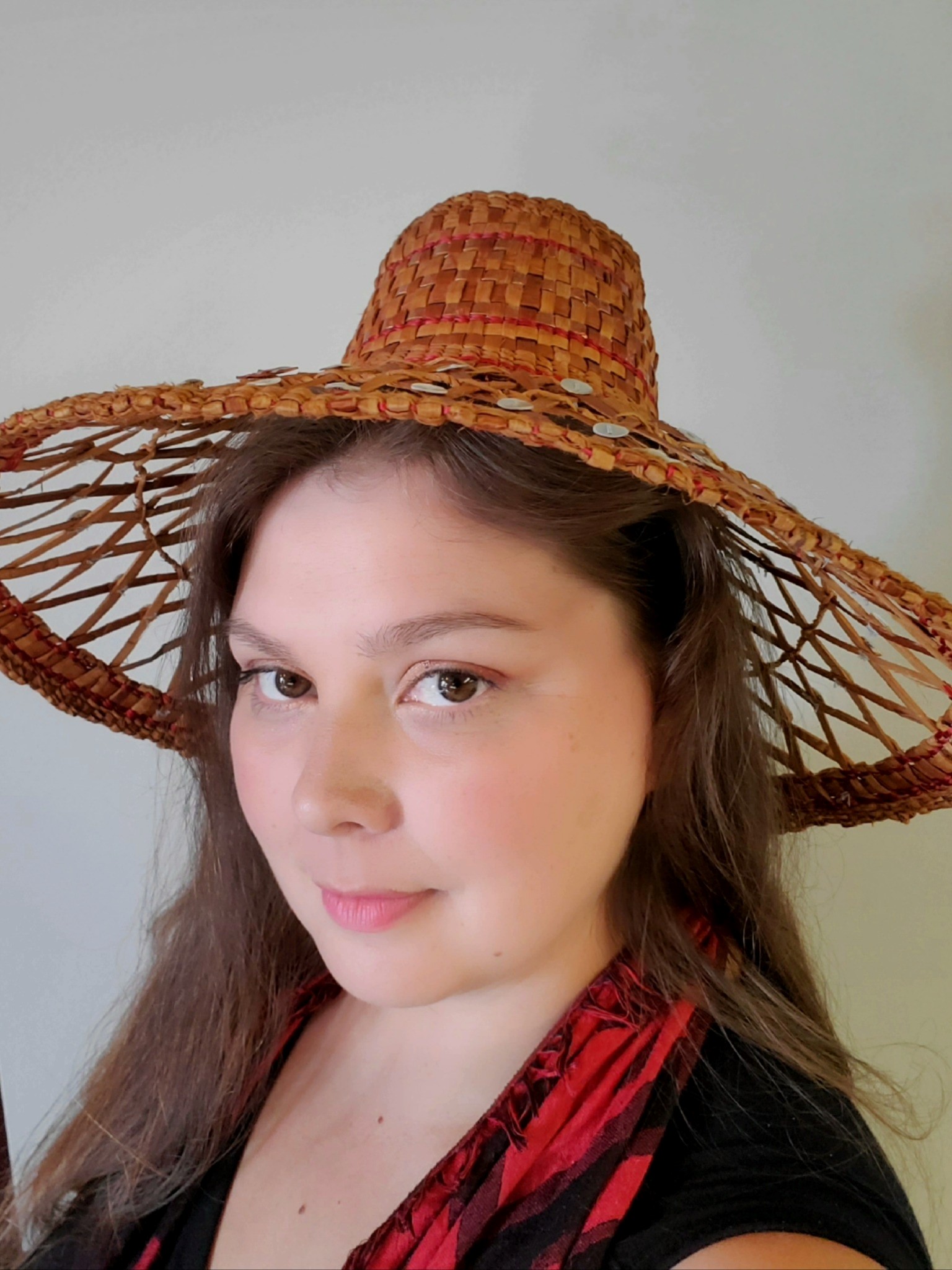It will be prominently featured on the exterior of the buildings facing the main campus road. Mitchell’s image is of a frog button blanket, which will mark the passageway between the two main wings of student housing.
“I knew it was the Knowledge Bridge, just because I have been working with North Island College on the project for a bit now. I got their vision of what the whole essence was,” she said.
Mitchell calls this piece “the knowledge keeper” because the frog is known for characteristics like adaptability and knowledge. “Frog brings great wealth and power as he travels and lives in the two worlds, water, and land,” she said in a statement about the work.
Further, the button blanket represents home and family who uphold students on their journey while celebrating their achievements in life. The black of the fabric is the house front, the red borders are the walls and the roof, and the opening at the top “neck” is to represent the smoke hole. The design also represents the many generations of family and ancestors.
 A member of the K’ómoks First Nation, Mitchell is from Kwakwaka’wakw territory. She also owns a gallery and gift shop with her family, Cedar Bark Gallery.
A member of the K’ómoks First Nation, Mitchell is from Kwakwaka’wakw territory. She also owns a gallery and gift shop with her family, Cedar Bark Gallery.
Art has always been her greatest interest, as she started drawing at an early age. She then picked up painting, carving, cedar bark weaving and sewing. She learned the Kwakwaka’wakw style but more recently has incorporated Coast Salish style. Overall, Mitchell describes her art as Northwest Coast but in a modern way.
“I’m hoping it’ll bring great pride to the K’ómoks people, to have more K’ómoks artists represented in the valley in more high-profile areas,” Mitchell said.
The Student Housing Commons project will include different artistic elements. Overseeing this process is the K’ómoks Connections Committee.
“They’re guiding the cultural components of the building. They’re making the recommendations and decisions around the artwork, gathering place, and the inclusion of Ayajuthem and Kwak’wala language,” said Kelly Shopland, NIC Executive Director, Indigenous Education.
The K’ómoks First Nation has worked with NIC and its Indigenous Education Council on the project, including the original concept, site selection and the design elements.
“We are thankful for K’ómoks First Nations involvement and guidance from the very start of this project,” Shopland said.
For information and updates about the Student Housing Commons, see our Engage site.